On December 22, 1921, a young Ernest Hemingway and his new bride, Hadley, arrived in Paris. He was 22, she was eight years his senior. He was penniless, she had a small inheritance. Ernest would call Paris his home, on and off, for the next six years. When he departed in 1928, he had acquired a new wife, become a successful novelist, and developed a style that redefined modern literature.
He had also managed, through blind luck and fortuitous timing, to live through one of the seminal decades of the 20th century in the city that was the epicenter for artists, writers and thinkers who would shape much of the rest of the century. His posthumous memoir of that era, A Moveable Feast, remains today the handbook for seekers of that “Lost Generation”.
Several months ago, it dawned on me that the centenary of Hemingway’s arrival in Paris was fast approaching. We’re always looking for a reason to return to the City of Light, so it didn’t take much to convince my angel wife, Debbie, to celebrate the occasion on a scavenger hunt of Ernest’s early Parisian haunts. The fact that dining and drinking venues figured prominently in Hemingway’s Paris was an added plus for me, and dozens of marvelous shops and boutiques made Debbie’s decision an easy one. So, with iPhone camera in hand and referencing his Moveable Feast recollections, we spent 8 days doing a poor man’s photo essay on the subject.
The articles and books already written on this topic are legion, but it was something yours truly had never done, though over the past four decades I had made piecemeal pilgrimages to various cafés, bars and Parisian backdrops associated with Papa Hemingway. This venture needed to be a more organized, more journalistic effort; something to enhance my professional Paris credentials. At least that Is what the IRS will be told should I be questioned about “expenses” incurred on the trip.
Rather than a chronological tour retracing exact routes made by Hemingway, ours was an out-of-sequence flanerie, an eight day stroll about the city, alternating between Left and Right Banks. This somewhat random method provided an enjoyable blend of research and leisure time. It worked quite nicely for us and it is how most tourists will experience these sites in the course of their own Paris wanderings.
The Left Bank:
For starters, how better to channel the spirit of Mr. Hemingway than to lodge in the same hotel (And same bedroom) that he and Hadley occupied back in 1921? That hotel, the Hotel d’Angleterre, still lists chambre 14 as the Hemingway Room and this was our home for the week leading up to the December 22nd Centennial.
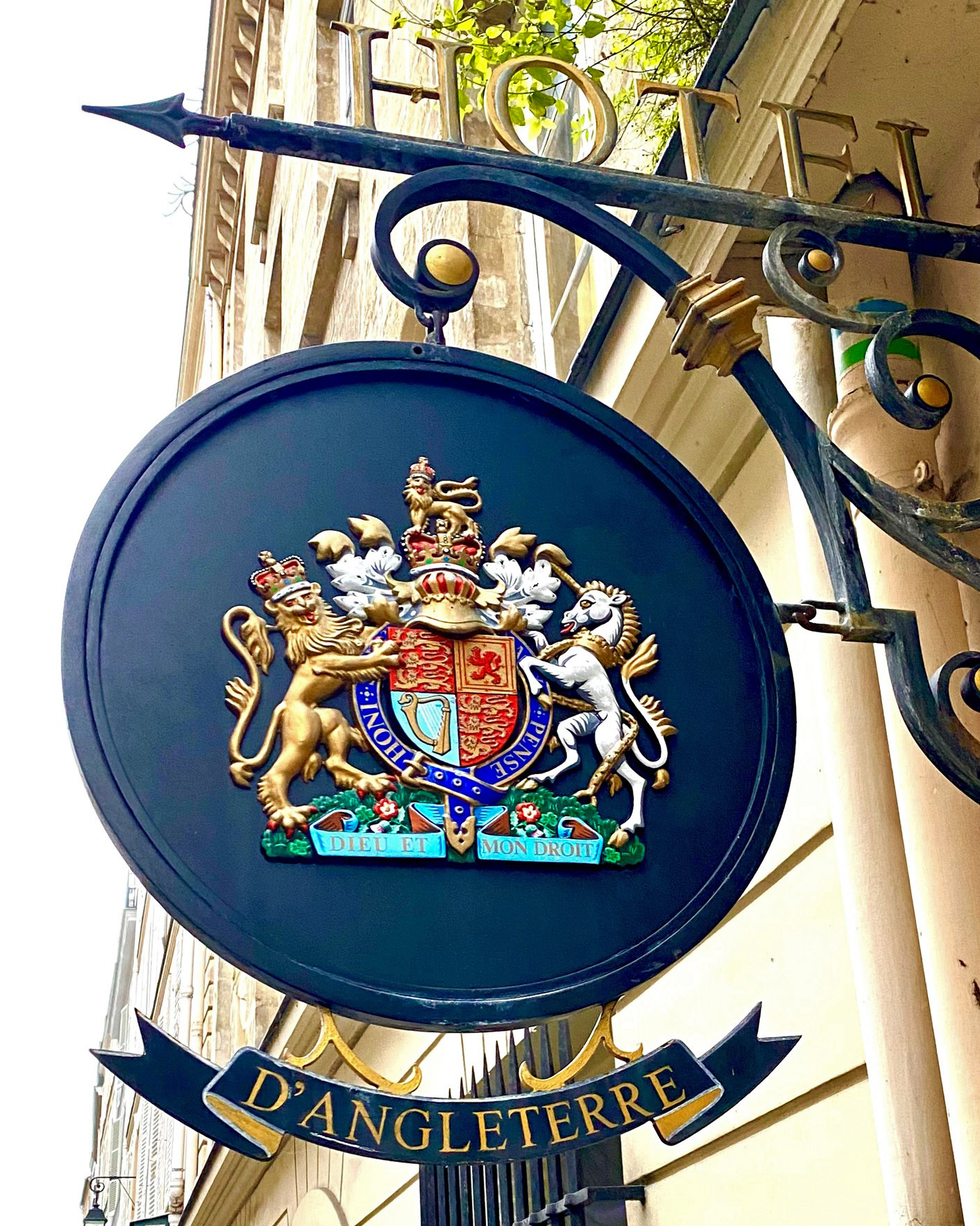
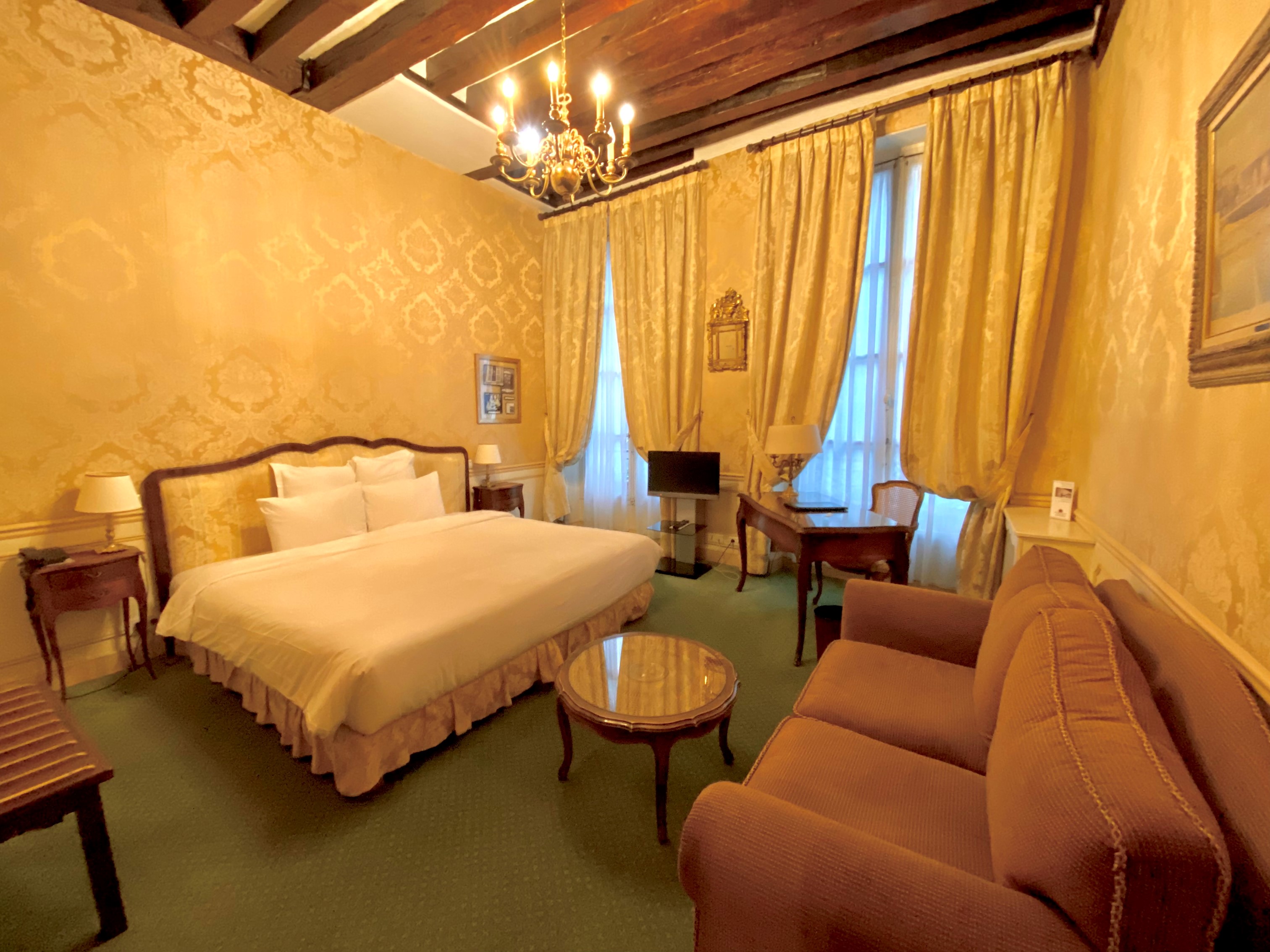
The d’Angleterre’s Left Bank location on historic rue Jacob and proximity to the iconic cafes, Les Deux Magots and Café de Flore, could not be better. The Oldest church in Paris, Saint-Germain-des-Prés, from which the entire quarter take its name, is also just a block or so away. This neighborhood is quintessential Left Bank Paris at its best.
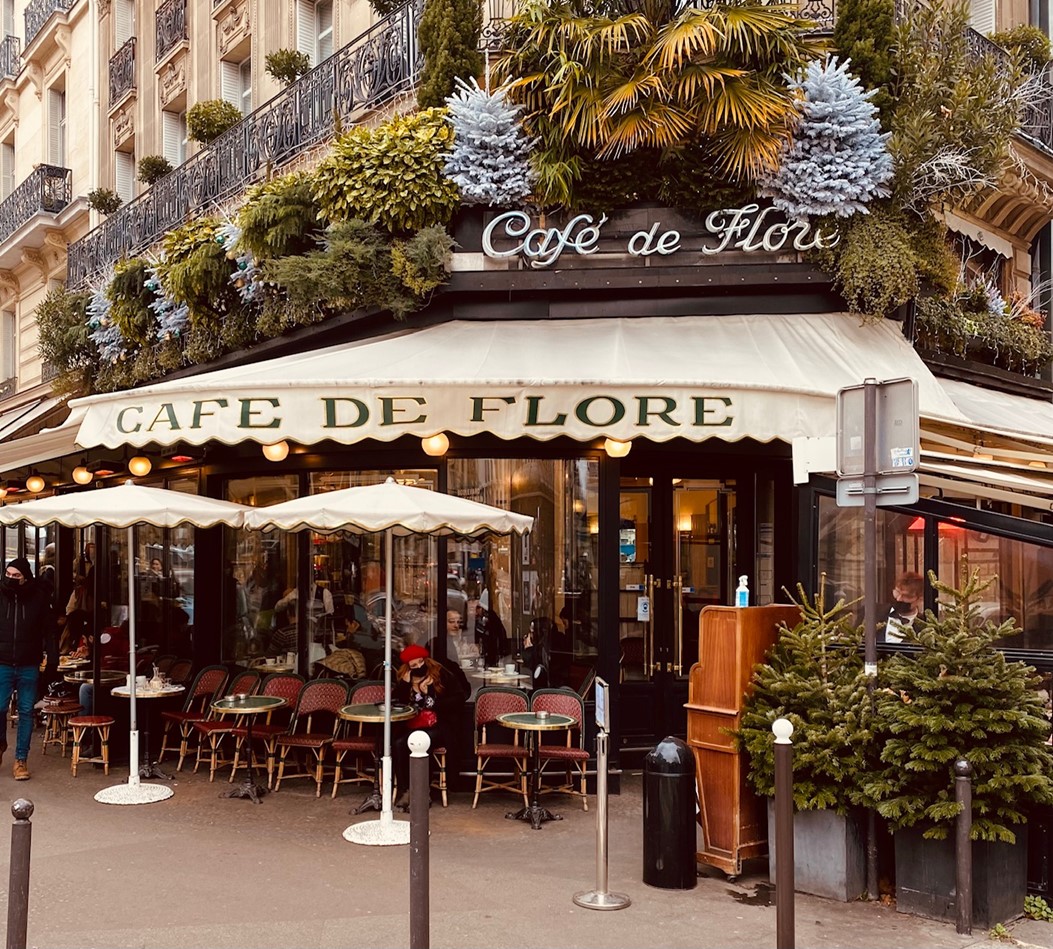
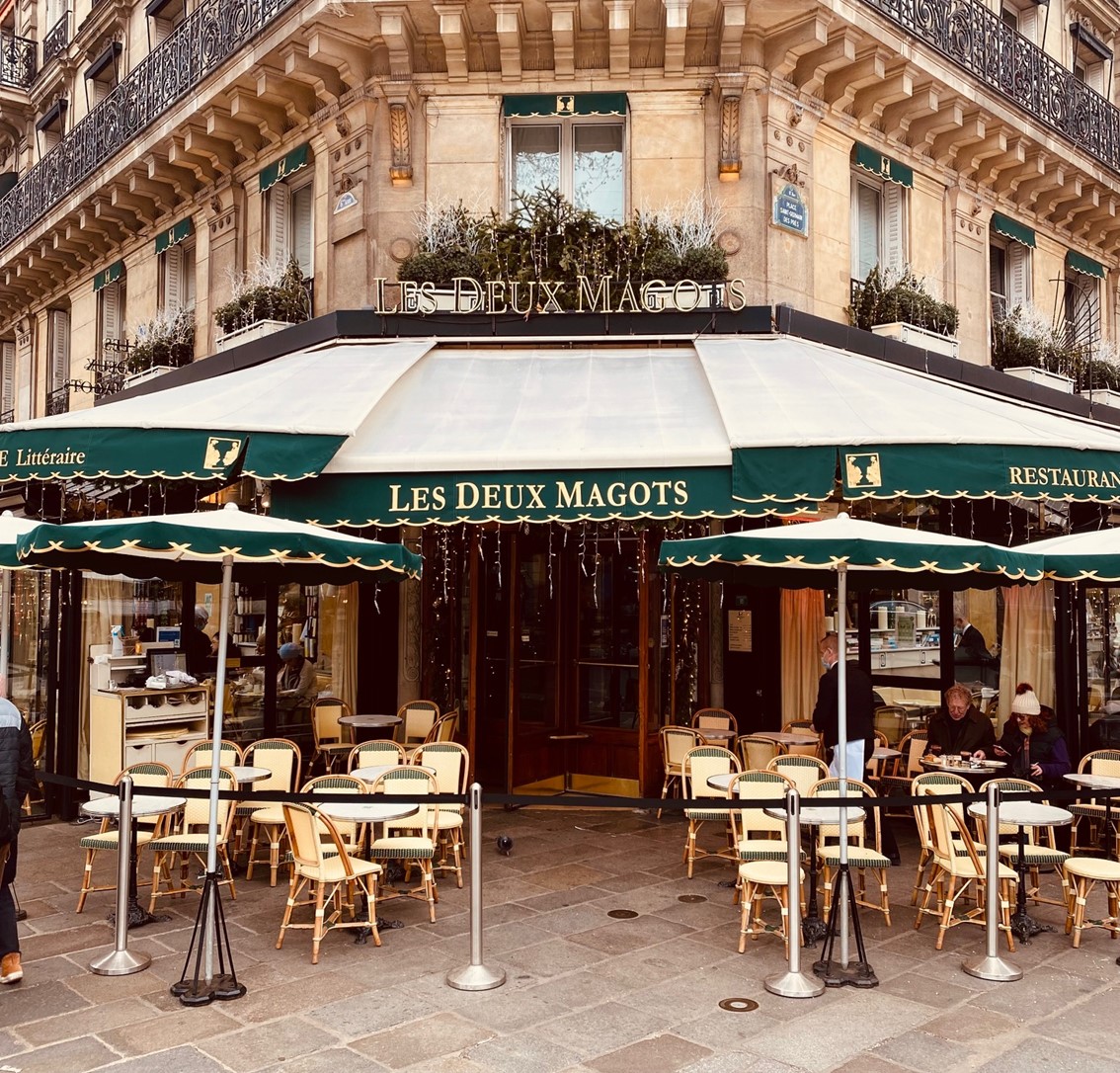
LE PRÉ AUX CLERCS: A half block East of our hotel, the neighborhood bistro, Le Pré aux Clercs, is still in operation. Ernest and Hadley dined there on more than one occasion in their first few weeks in Paris. In 1922 a steak dinner for two could be had there for less than $1 US Dollar. Such was the the post-WWI exchange rate. It was one of the big drawing cards that made Americans flock to Paris in the 20’s. In those years starving artists could starve in style.
MICHAUD’S: Another nearby spot made famous in a chapter from A Moveable Feast, is on the corner of rue Jacob and rue des Saints-Pères. It is the former site of a popular 1920’s restaurant, Michaud’s. Ernest recounts a memorable meal there with F. Scott Fitzgerald. According to Hemingway, Fitzgerald expressed fears of physical inadequacy in the bedroom caused by comments from his high strung and progressively crazy wife, Zelda. To allay Fitzgerald’s concerns, Hemingway escorted him to the men’s room, inspected Scott’s member and declared it to be “Adequate”.
The place has changed hands many times over the years and is now a nondescript eatery called Comptoir Des Saints Peres. The present owner still gets drop-in visits from Hemingway fans asking to see the men’s room. A true photojournalist might have ventured in to capture a shot of this legendary lavatory, but Debbie and I decided to forego the experience.
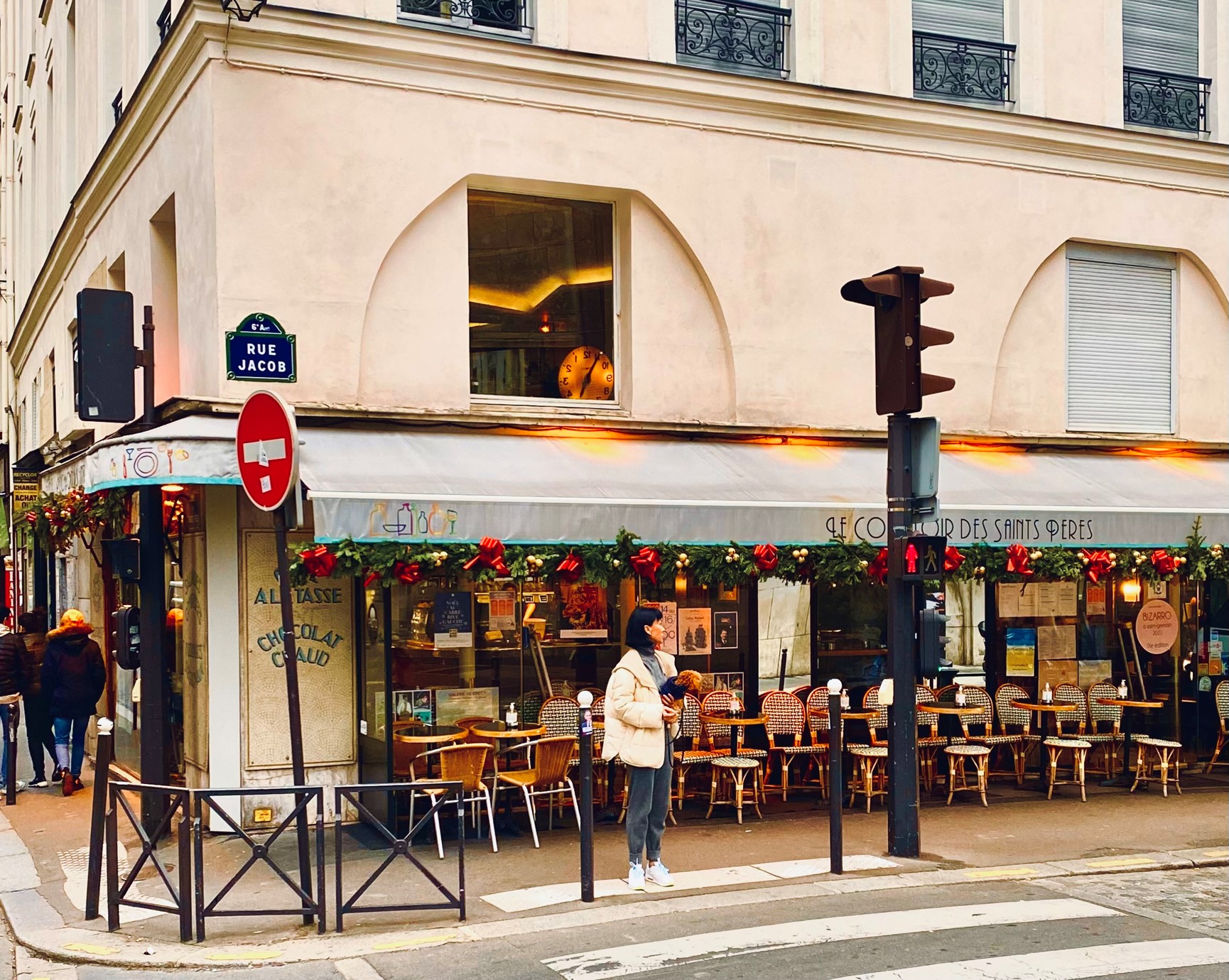
BRASSERIE LIPP: Across the Street from Les Deux Magots and Café de Flore, Lipp is a Parisian institution, even without its Hemingway connection. It is a frequent dining destinations on our trips to Paris. In keeping with our Hemingway theme, on our recent lunch visit I requested the same dish described by Hemingway in chapter eight of A Moveable Feast: Cervelas. This is a variety of sausage, not unlike a thick frankfurter, split lengthwise and covered with a special mustard sauce. Some steamed potatoes drizzled with oil, a liter of beer, and VOILÀ ! – it is 1923 once again.
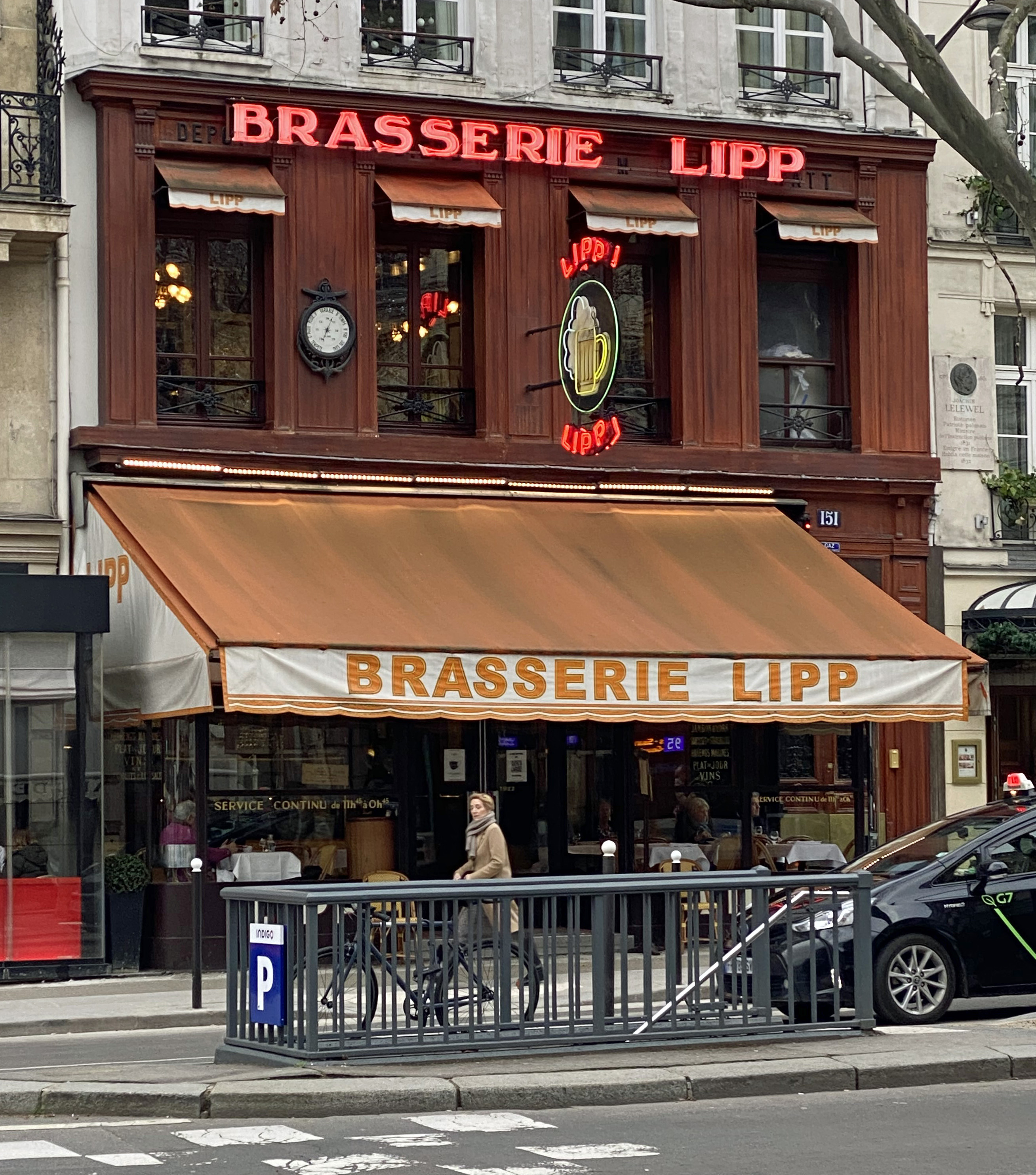
LODGINGS: Ernest and Hadley stayed only a few weeks at Hotel d’Angleterre until they found their first apartment in a working-class neighborhood of the Latin Quarter, near the Pantheon. Tiny, cramped and with no toilet or hot water, its primary attribute was affordability. This was the “Starving Writer” phase of Ernest’s existence. They remained here until they returned to Canada in August, 1923 for the birth of their son, John (AKA Bumby)
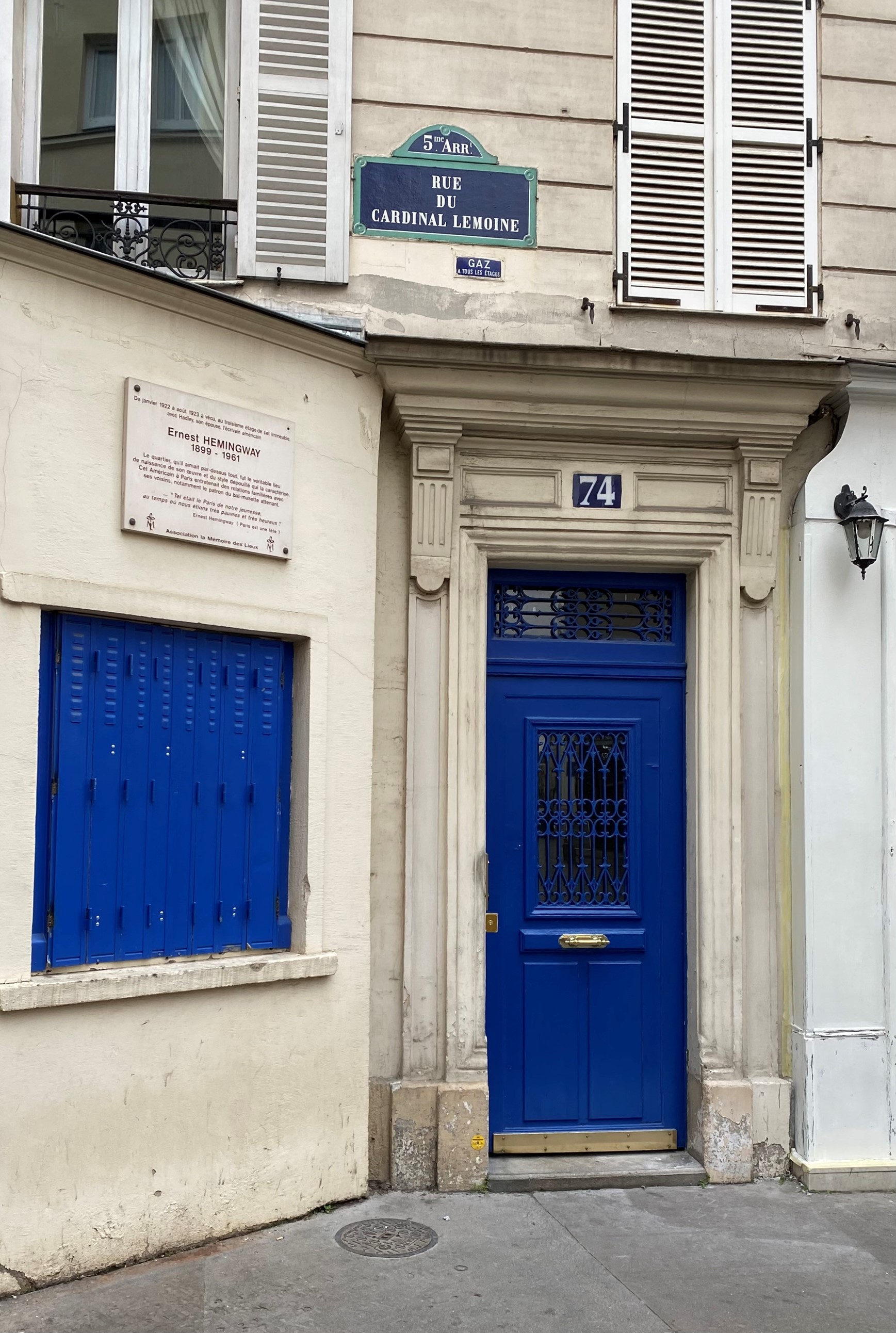
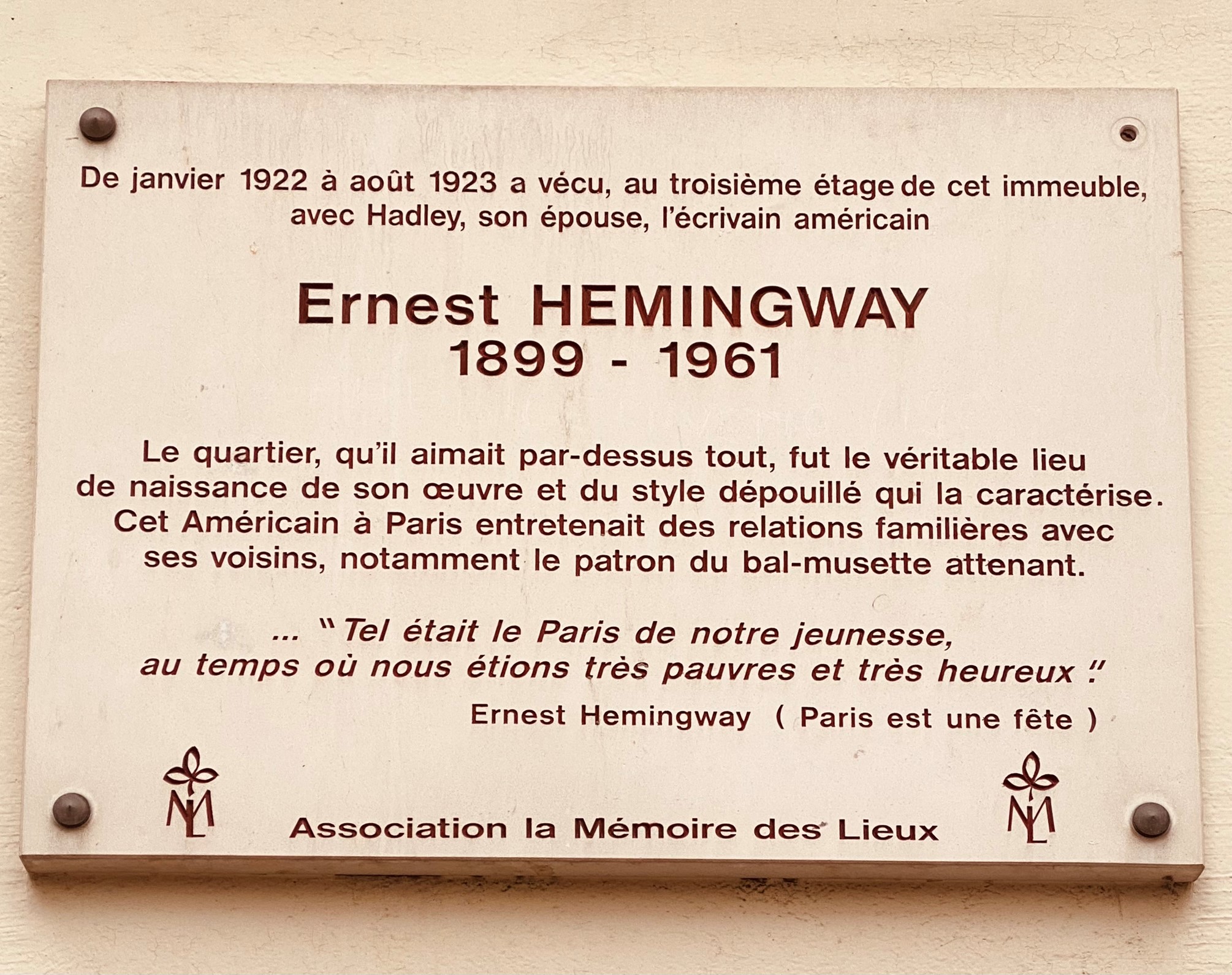
The Cardinal Lemoine apartment was too tiny and cramped for writing so Ernest rented a room around the corner at 39 rue Descartes. On cold days he would work in this 4th-floor garret. In good weather he would work at local cafés where the cost of a cup of coffee was the only rent.
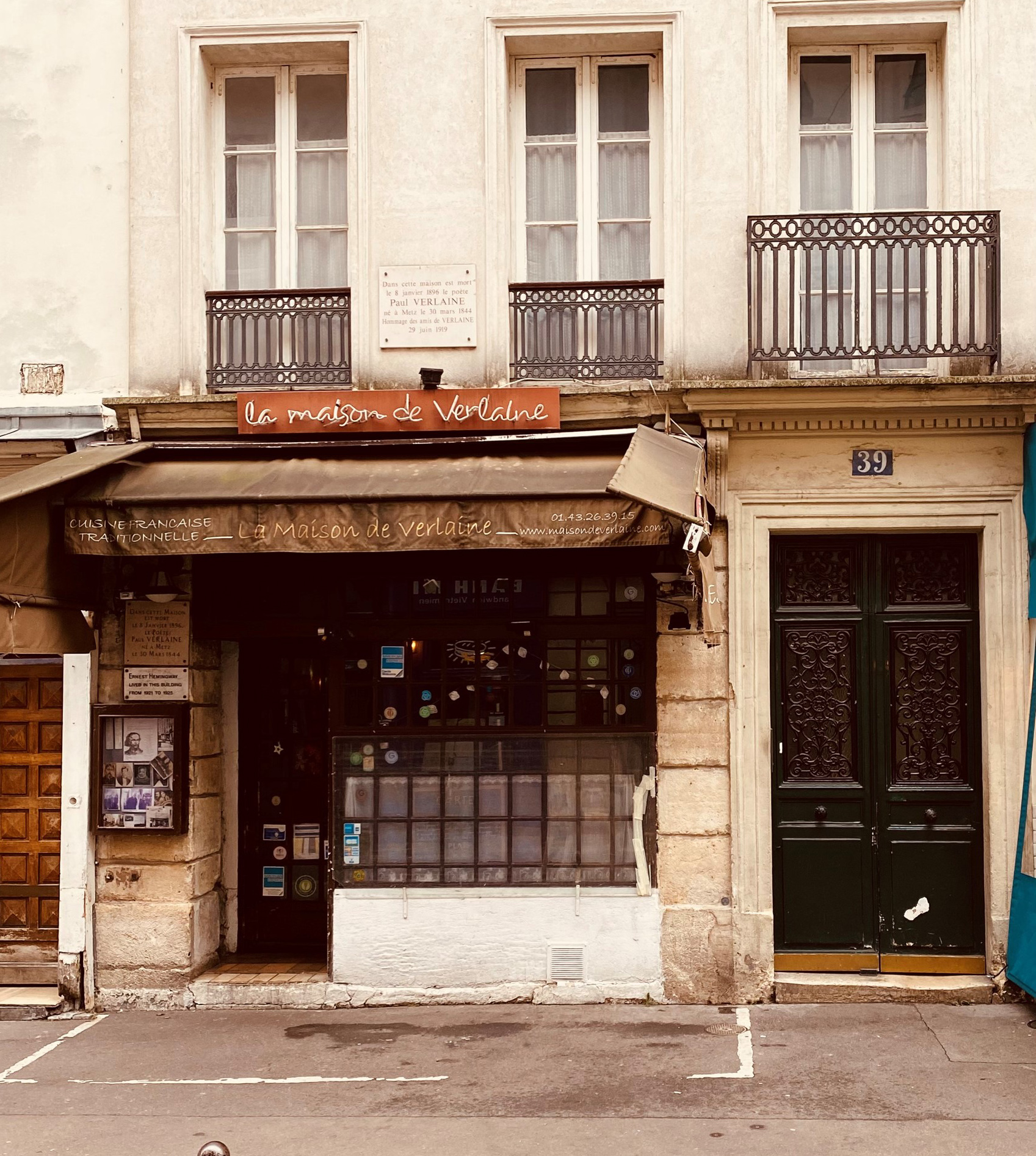
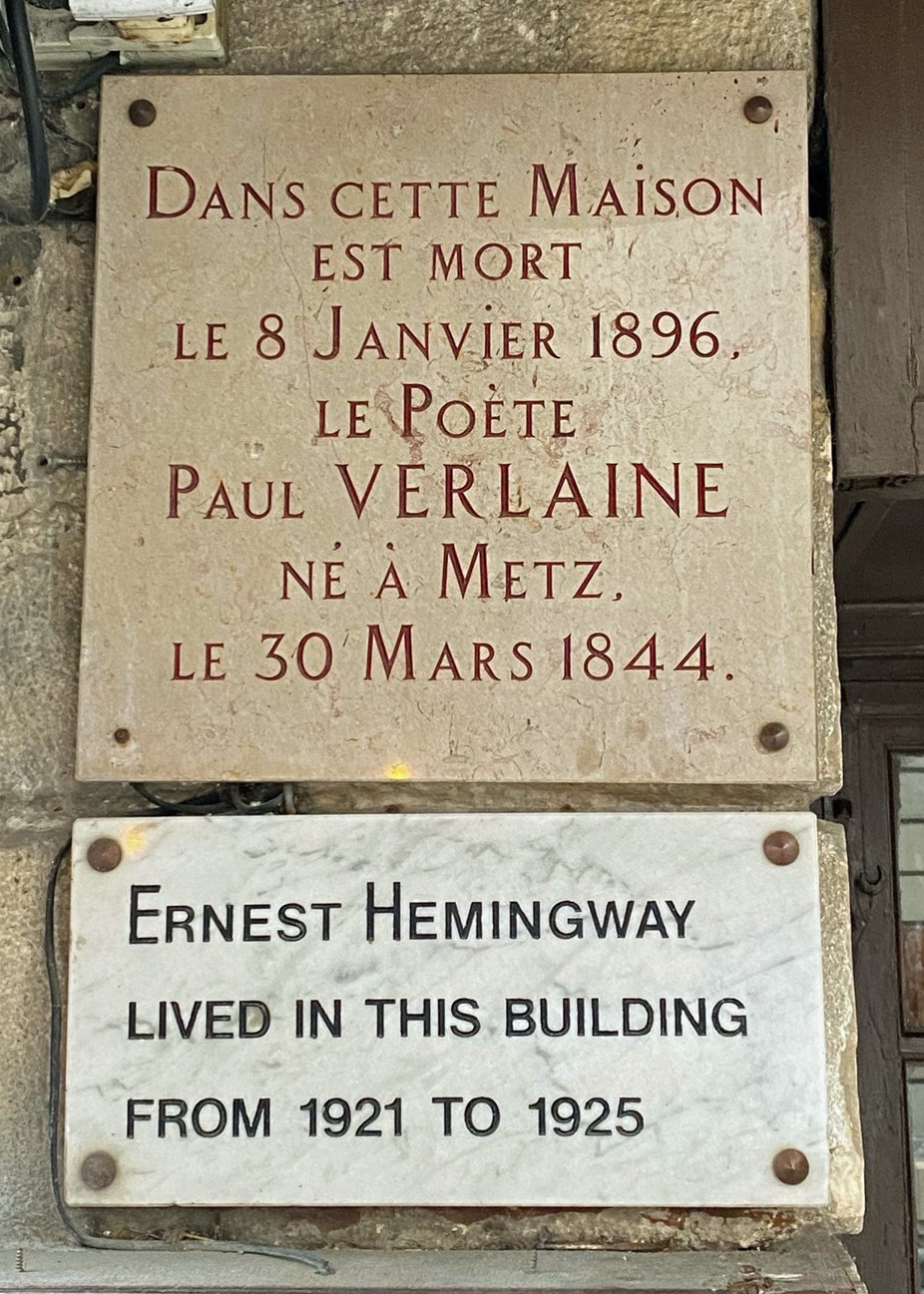
MORE LODGINGS: Upon their return from Canada in January 1924, the couple and their infant son relocated to 113 rue Notre-Dame-des-Champs, just south of the Luxembourg Gardens and near the social whirl of Blvd. Montparnasse. This apartment, above a saw mill, has long since been demolished. A block of modern buildings now occupies the site. We deemed it unworthy of a photograph. That notwithstanding, the time spent at this location is one of the most important periods in the Hemingway story. His first successful novel, The Sun Also Rises, was largely written down the street at Hem’s favorite café, La Closerie des Lilas.
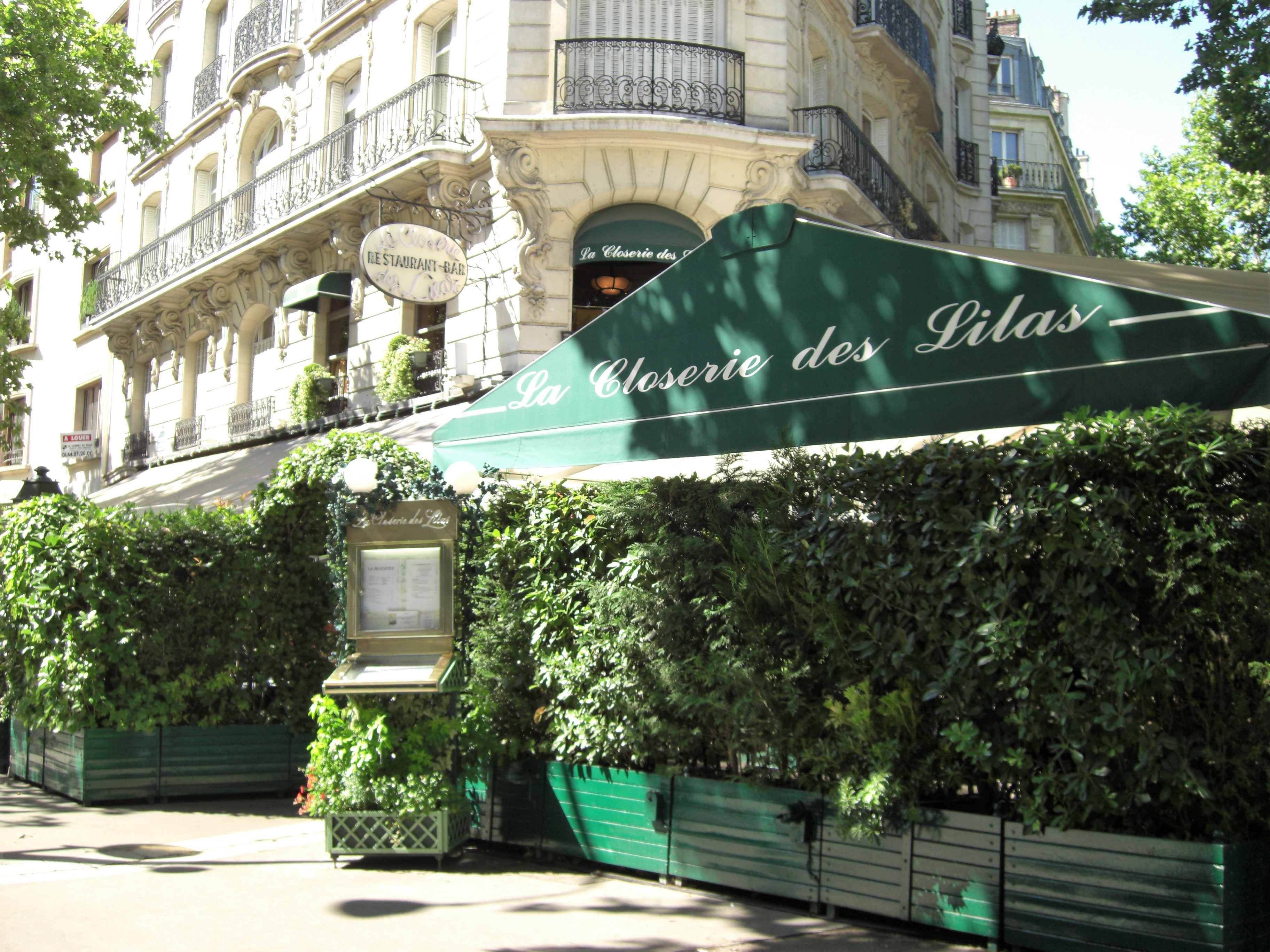
CLOSERIE DES LILAS: Hemingway preferred to work here because it was near his apartment, and because it was far enough away from the four famous & bustling MONTPARNO cafés down the Blvd Montparnasse. Here he would not be disturbed by the throngs of tourists and shiftless would-be artists and writers whom he held in low regard. Unlike many young expat writers, Hemingway treated writing like a job and concentrated diligently on it.
A MONTPARNASSE CRAWL: The intersection of Blvd. Montparnasse and Blvd. Raspail was the center of 1920’s Parisian social and intellectual life. The four cafés mentioned here occupied this corner and would have been well known to Hemingway, as well as every other artist, writer and flaneur of the Lost Generation. We made a pleasurable dining circuit of these places one night during the quest for Hemingway haunts. After a champagne aperitif at the Closerie des Lilas, we headed for La Rotonde, followed by dessert and a nightcap at Le Select, with a nod along the way to Le Dôme and La Coupole.
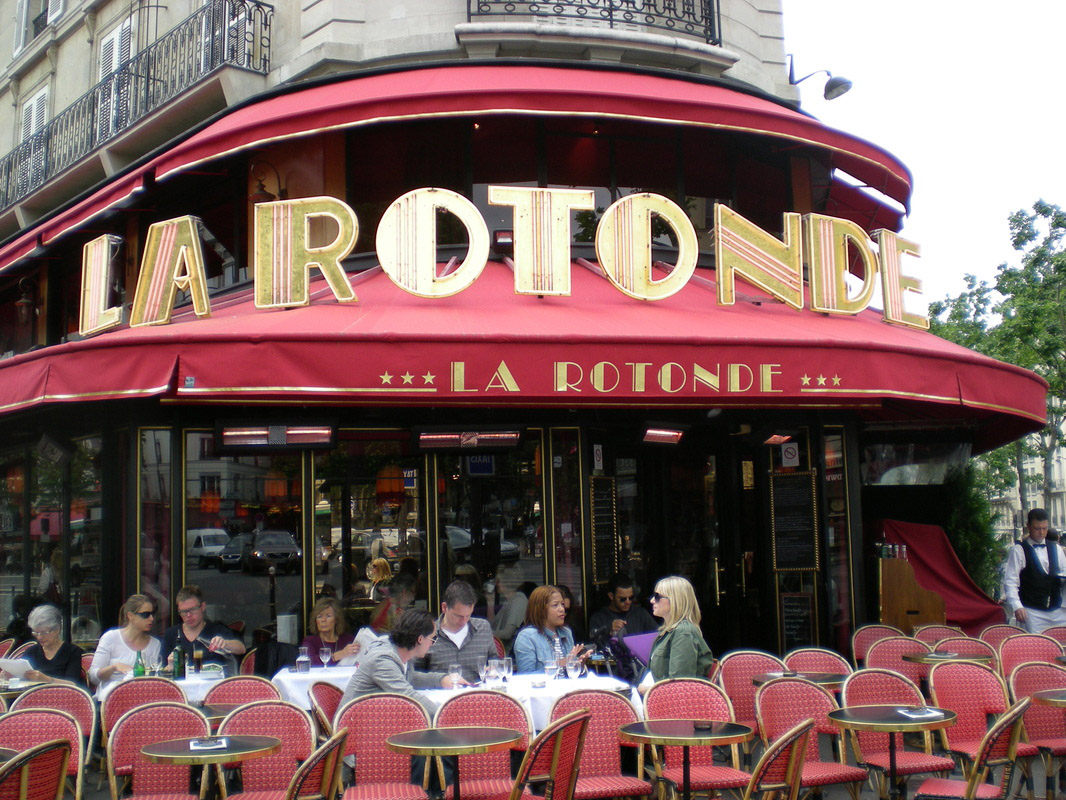
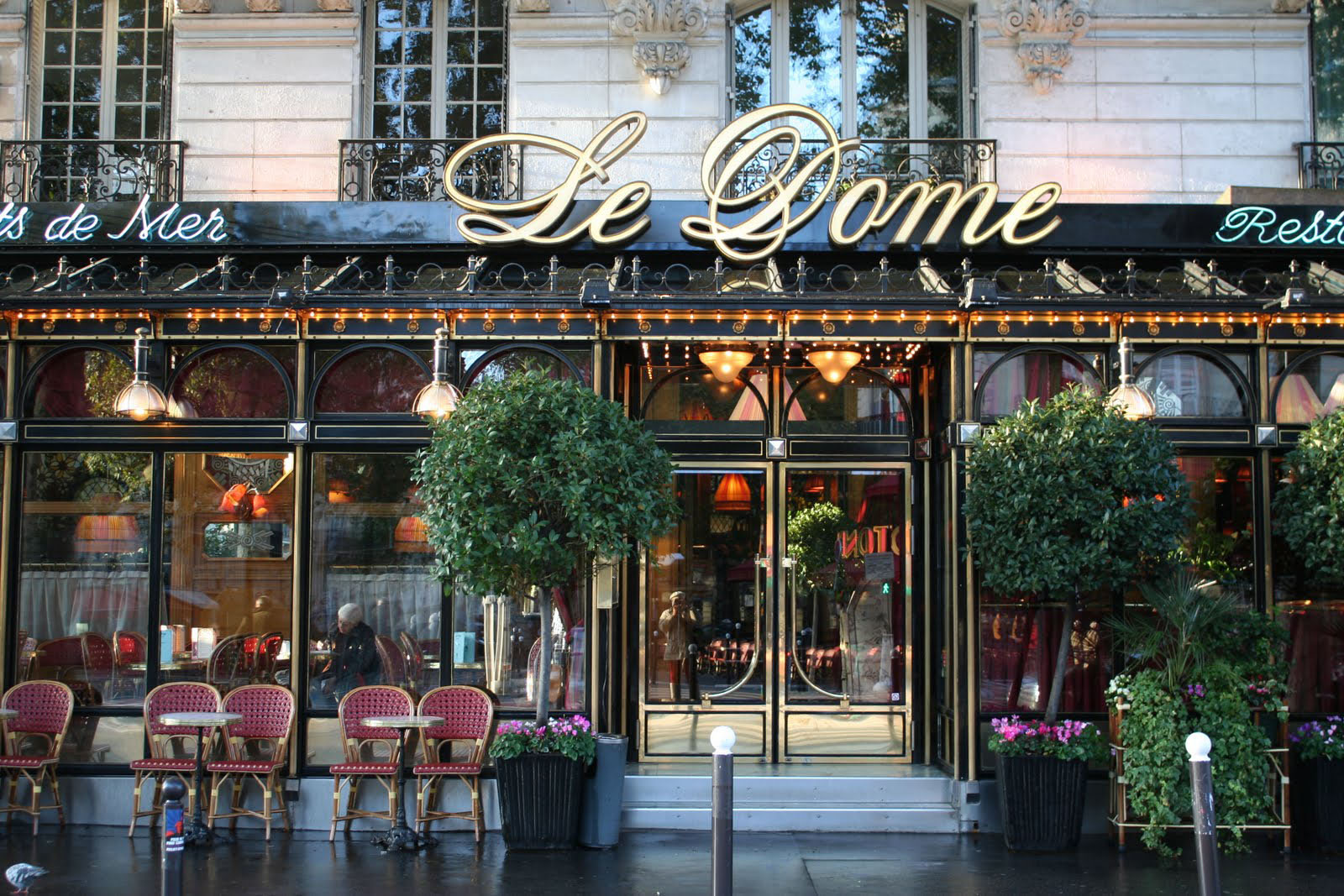
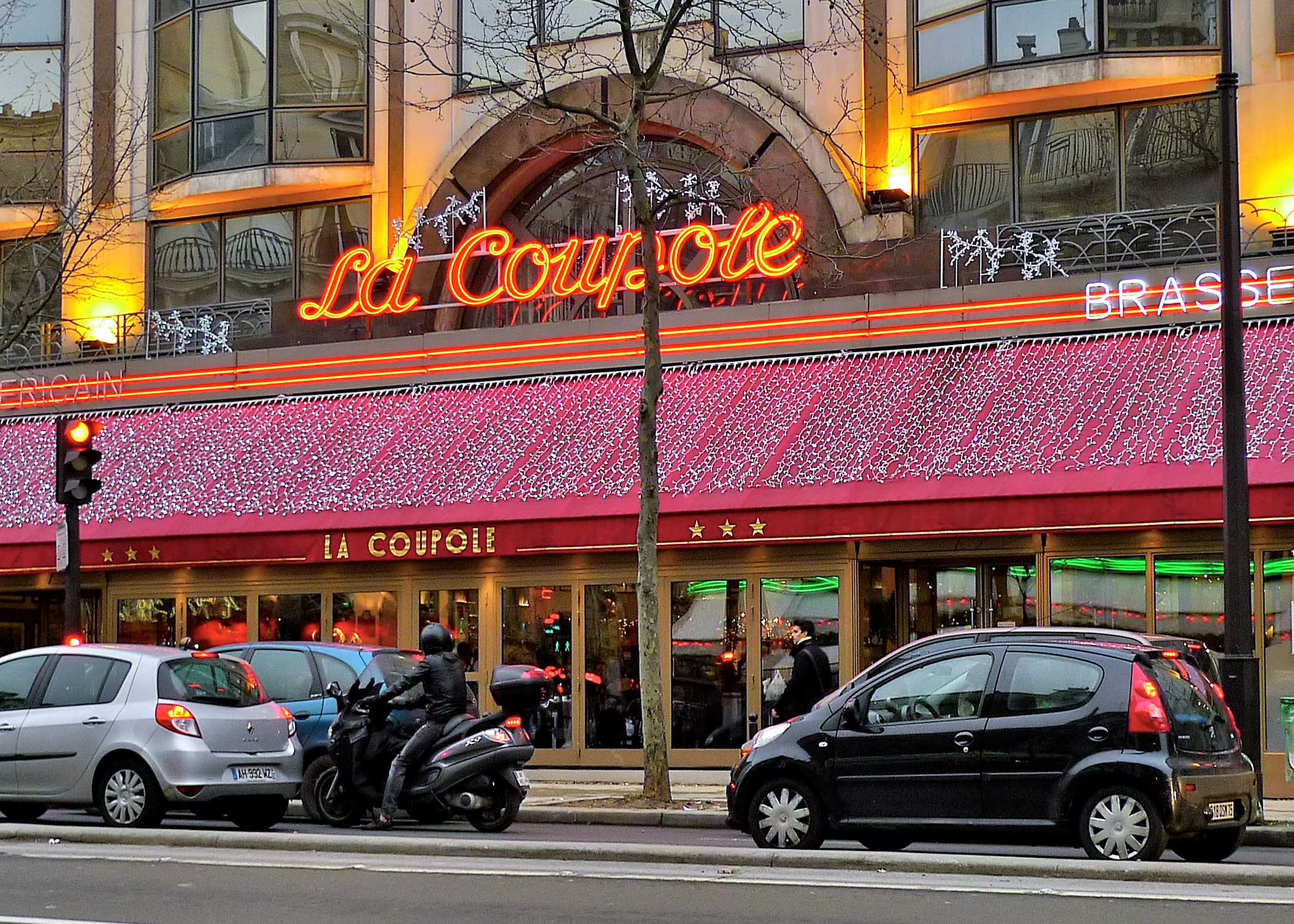
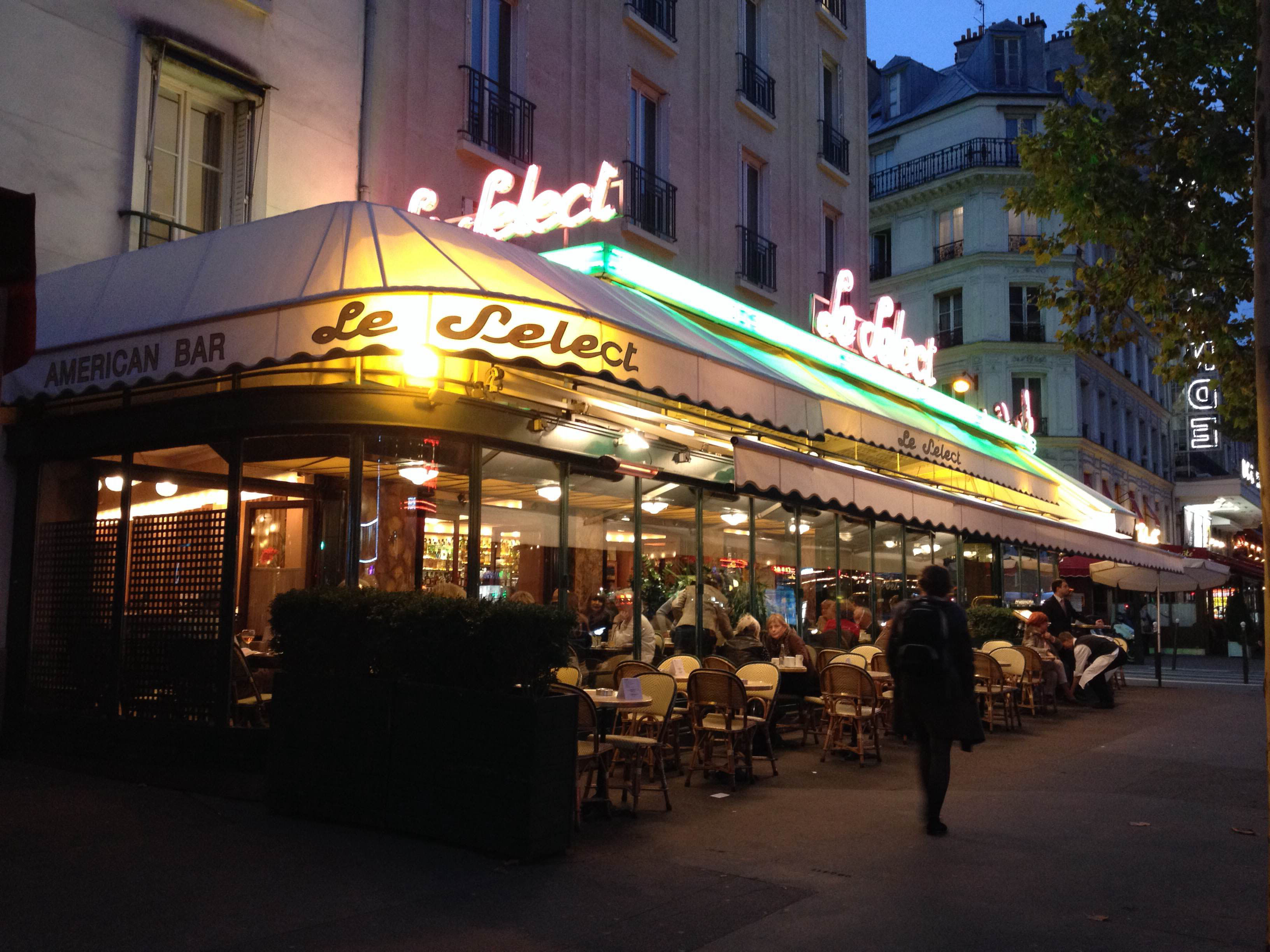
MORE MISCELANEOUS HAUNTS: A couple more noteworthy locales deserve mention among Hemingway’s Left Bank hangouts in those early days. First, the Bouquinist (Booksellers) stalls that line the Seine, between the Pont de Sully and the Pont Neuf, where Hemingway would take a break from writing for a stroll. The green Bouquinist boxes still look much the same today.
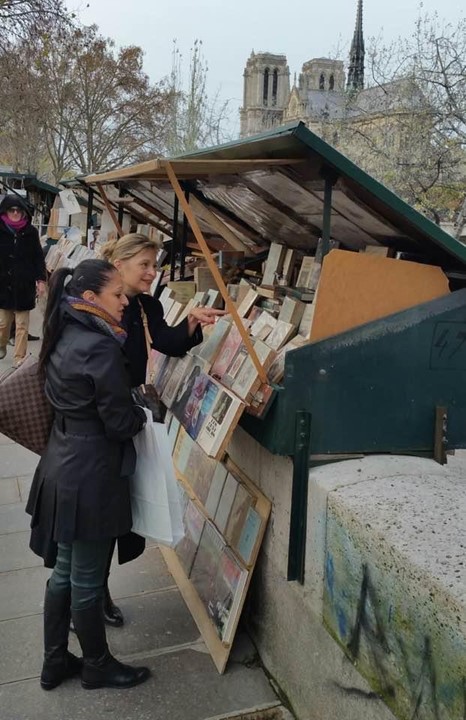
LUXEMBOURG GARDENS: Another bit of Hemingway lore deals with his claim to have trapped pigeons in the Luxembourg Gardens, to be smuggled home in Bumby’s pram and consumed to augment his meager diet. Whether true or not, the story is a prominent bead in the Hemingway Rosary.
He was most certainly a frequent visitor to these gardens due to their proximity to his apartment and two of is favorite destinations: the apartment of Gertrude Stein, and Sylvia Beach’s book shop; Shakespeare and Company. Both locations are obscure today but for a small plaque above each. Stein’s lists her years of residence there, and at the former Shakespeare and Company a tablet commemorates the publication of James Joyce’s Ulysses at this address.
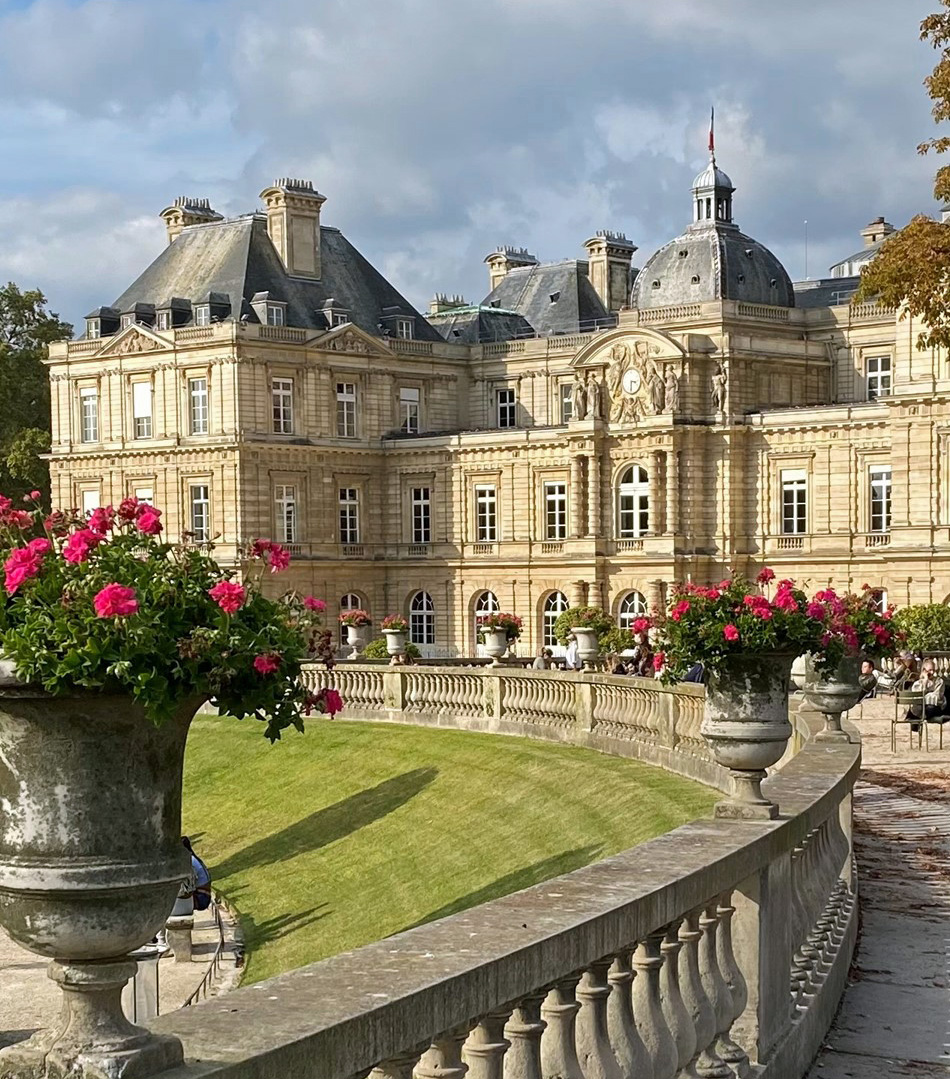
A THIRD APARTMENT: After his marriage to Hadley fell apart due to an affair with Pauline Pfeiffer, Ernest and Pauline moved into this upscale apartment on the top floor of 6 rue Férue, near the Luxembourg Gardens. Pauline came from money (Her rich uncle fronted the rent for the apartment) and Ernest was at last earning a respectable income as a writer, so they could afford classier digs. In more recent times the property was purchased by film star Johnny Depp.
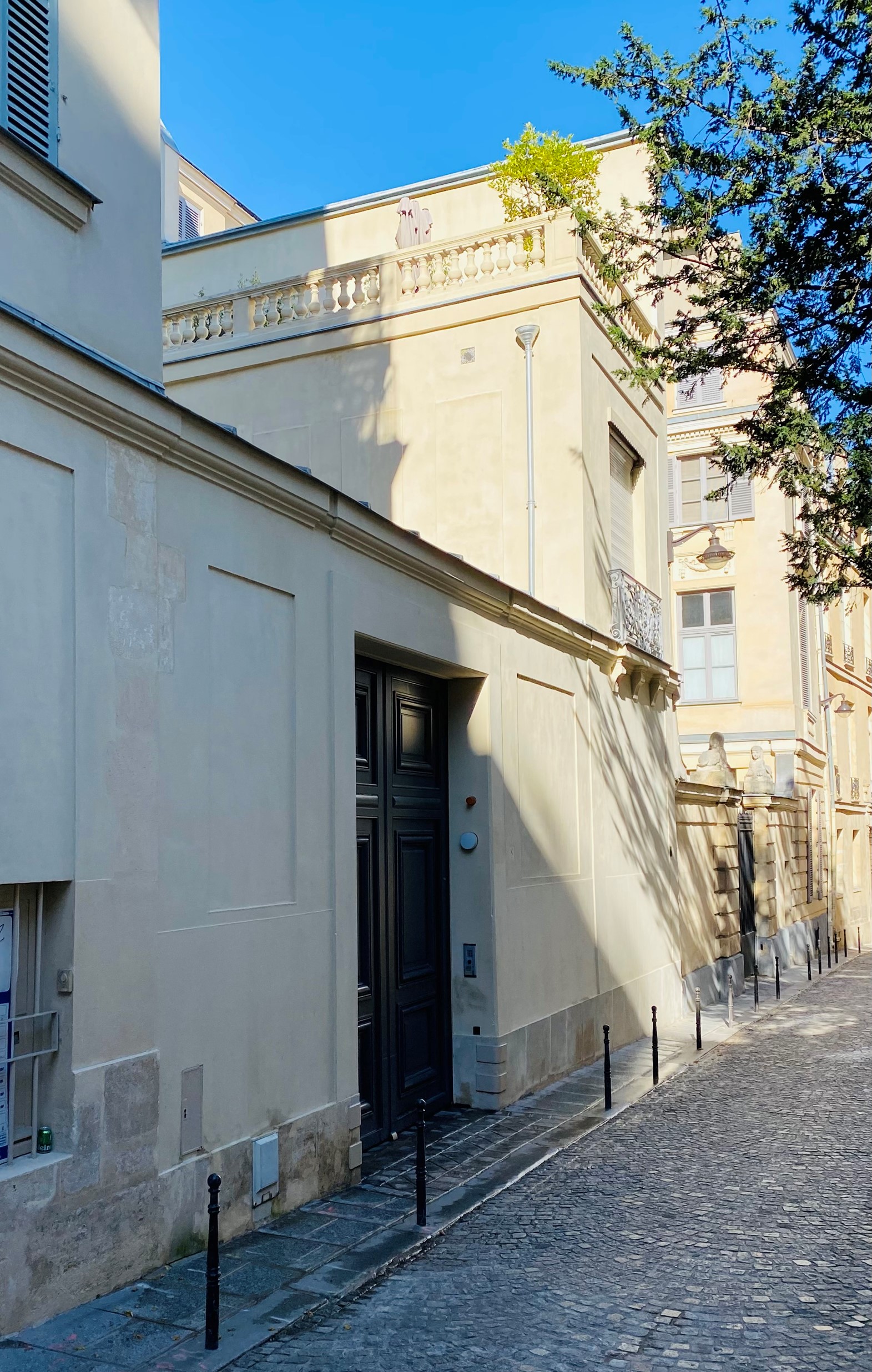
Right Bank:
Hemingway spent most of his time in those early years on the Left Bank, but still left his mark on many Right Bank spots. His bank was here, near the Opera, and of course there was a lot of drinking to be done on this side of the river as well. On return trips to Paris in later years, as his fame and wealth increased, Ernest spent more time on the more posh and expensive Right Bank.
CAFÉ DE LA PAIX: This iconic and pricy restaurant located next door to the Paris Opera was where Ernest and Hadley decided to celebrate their first Christmas supper in Paris. The final bill was substantially more than expected and Ernest had to run back to the Hotel d’Angleterre (A considerable distance on foot) for more cash while Hadley nervously stalled the waiter.
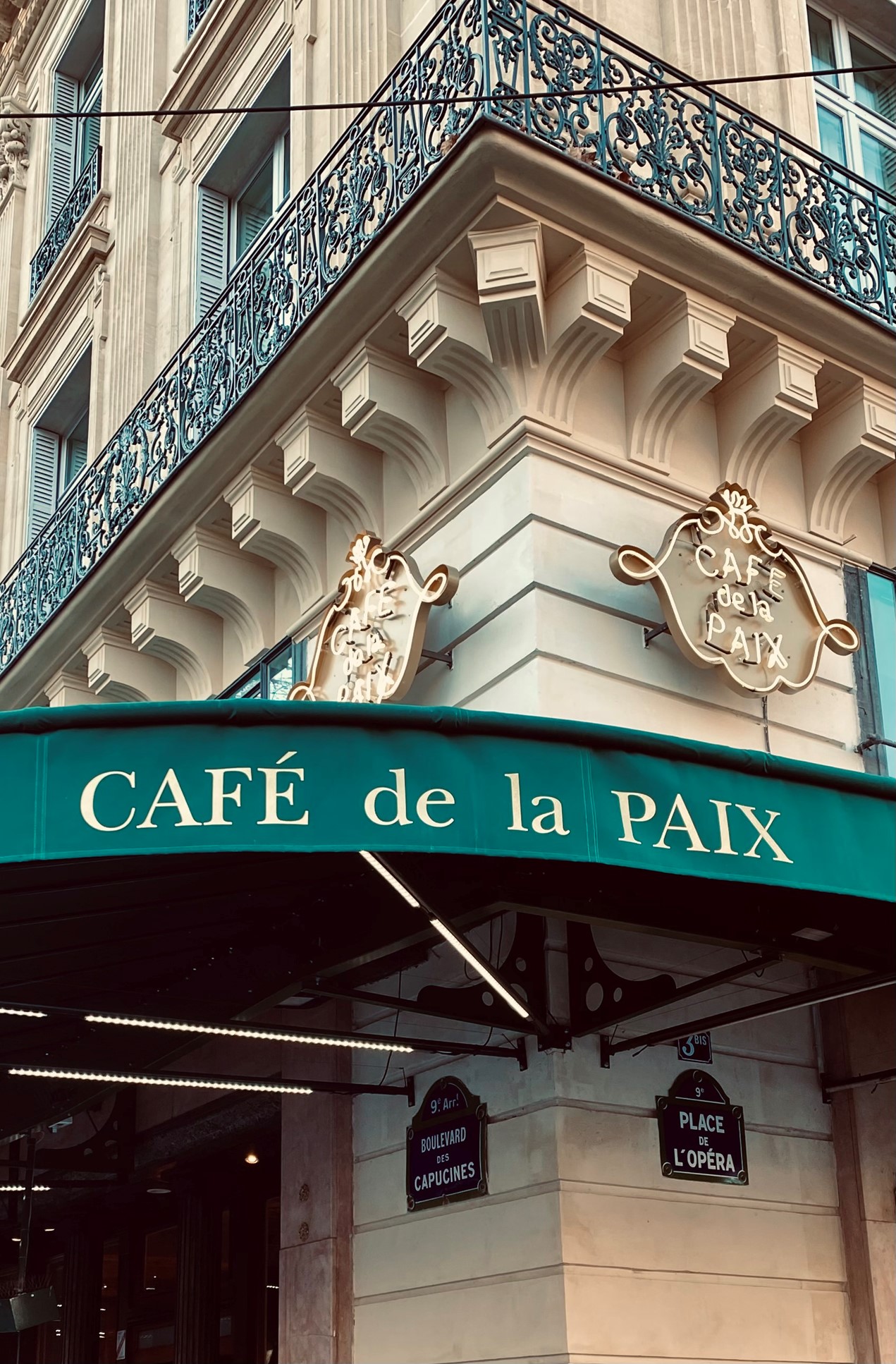
HOTEL RITZ: Hemingway had a long association with the fabled Ritz Hotel. The most famous story occurred in August of 1944. Paris was being liberated by the advancing Allies and Hemingway, then a war correspondent, got ahead of the main allied force and raced through Paris in a Jeep with a small continent of GI’s. After dropping off a case of grenades to Sylvia Beach on Rue de l’Odéon, he raced to the Ritz and personally “liberated” the bar. Once secured, he promptly ordered 51 Martinis for himself and his thirsty cohorts (One source lists the number at 73, another claims it was 91). Several days of debauchery followed.
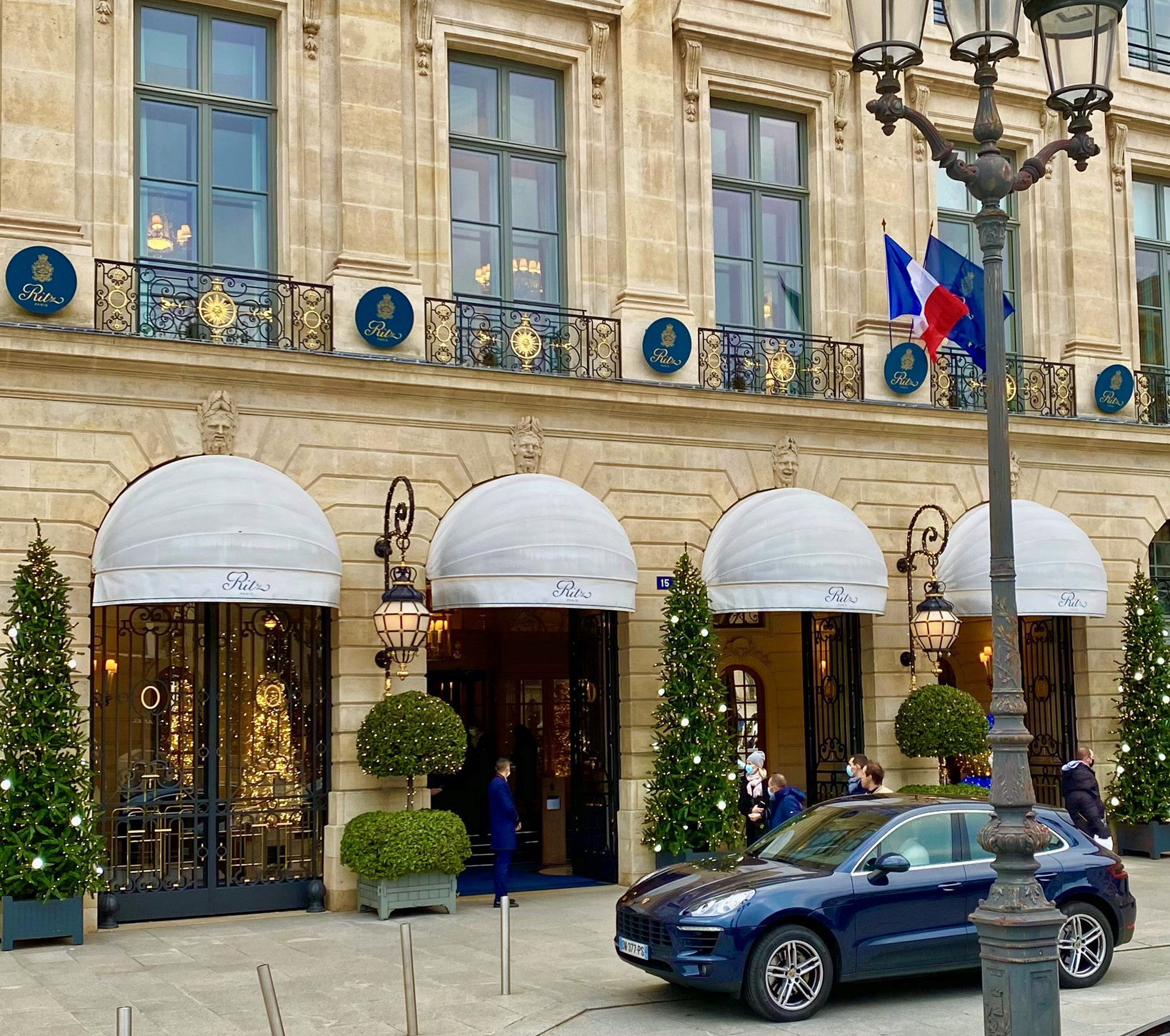
HARRY’S NEW YORK BAR: Volumes have been written about this legendary watering hole. Opened on Thanksgiving Day 1911, Harry’s has played host to the greats and not-so-greats of the past 110 years. Between World Wars it hosted Hemingway, F. Scott Fitzgerald and George Gershwin who, according to legend, composed An American in Paris on the basement piano. Later it welcomed the likes of Humphrey Bogart, Rita Hayworth, Clint Eastwood, Morgan Freeman, and the Duke of Windsor. Harry’s was also a sportsman’s hangout, frequented by the racing set and denizens of the boxing world (Primo Carnera’s boxing gloves hang above the bar). This would be a natural attraction to Hemingway who was a proficient amateur boxer. Harry MacElhone, the bar’s owner, occasionally acted as Ernest’s corner man.
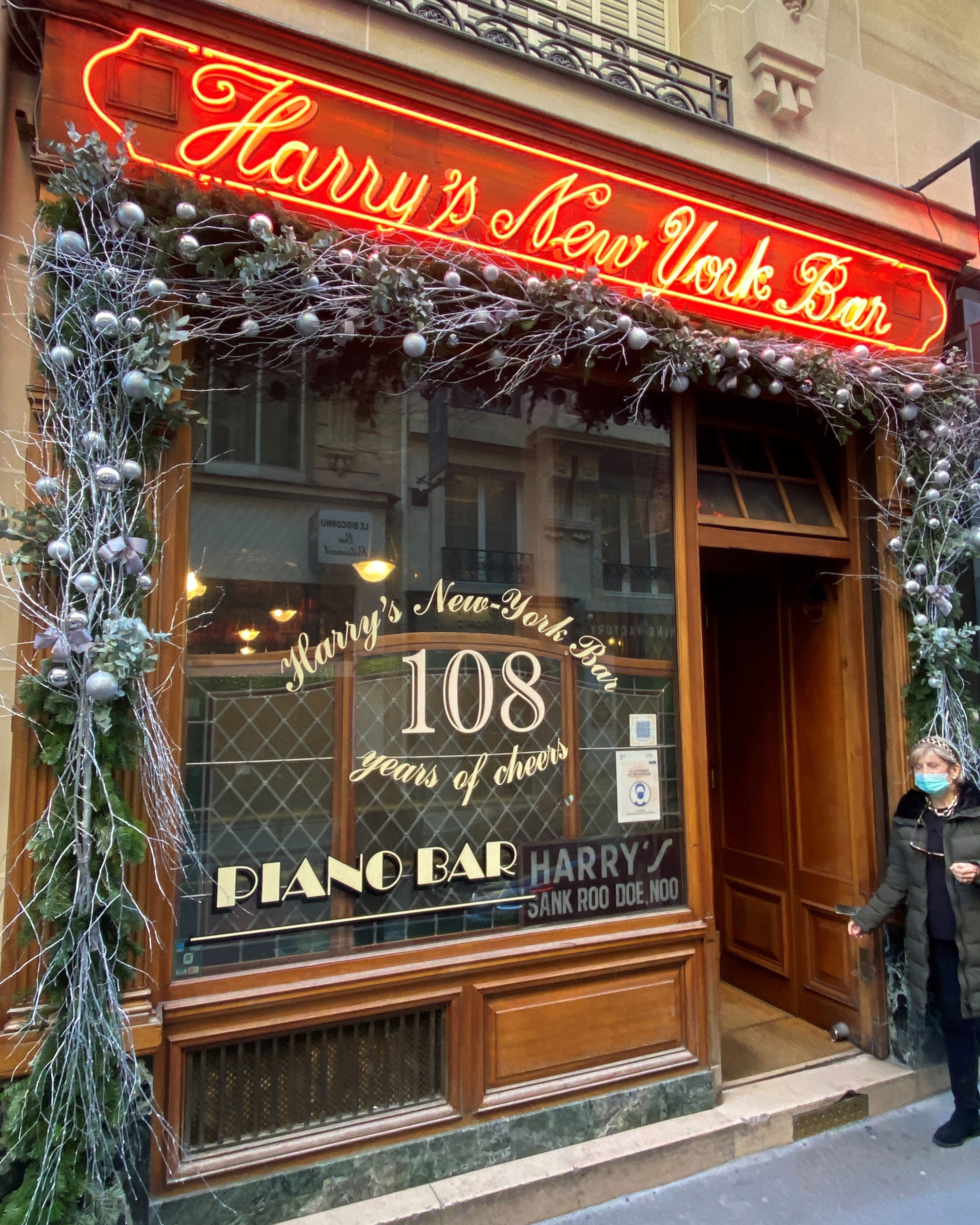
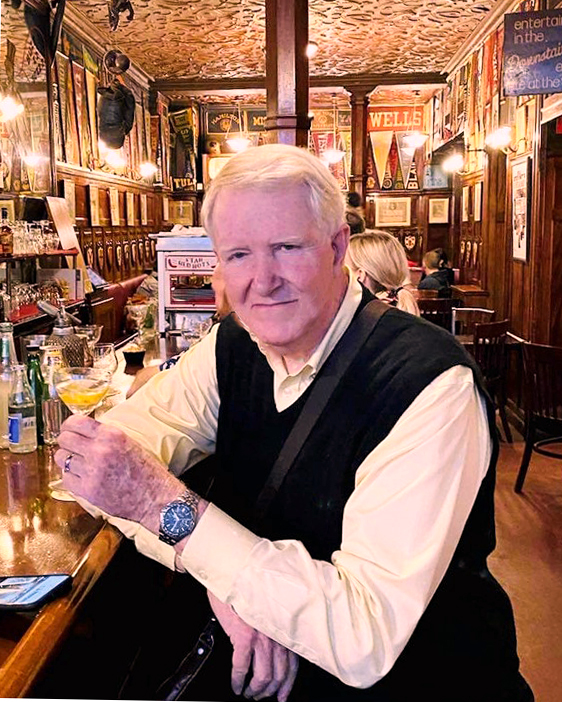
Our search for the Paris of young Ernest Hemingway drew to a close with a better understanding of the Lost Generation era, of the challenges faced by a struggling young writer in that milieu, and a sentimental appreciation for what Ernest felt when he penned these words in A Moveable Feast:
“…this is how Paris was in the early days
when we were very poor and very happy.”
ADDRESSES:
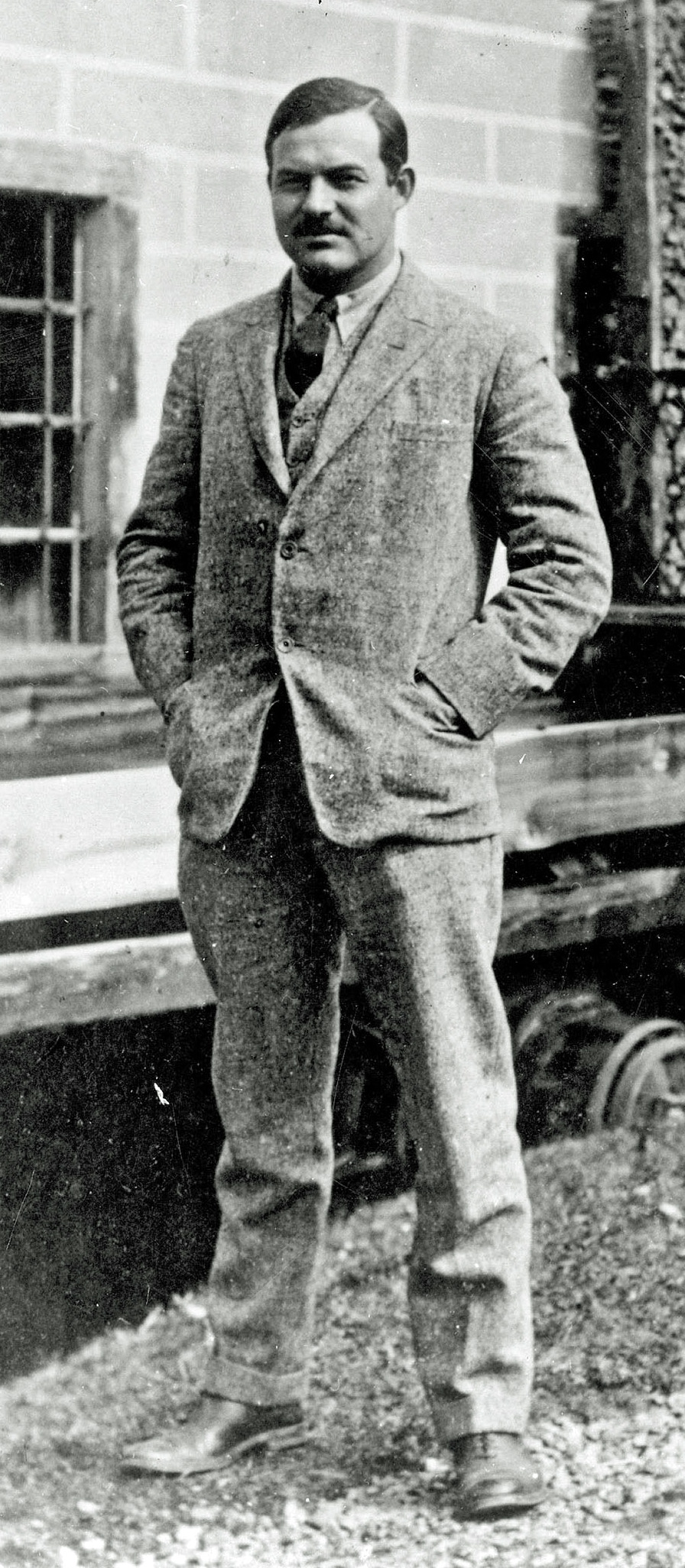
Left Bank
Hotel d’Angleterre – 44 rue Jacob, 75006
Café de Flore -172 Bd Saint-Germain, 75006
Les Deux Magots – 6 Pl. Saint-Germain des Prés, 75006
Le Pre aux Clercs – 30 rue Bonaparte, 75006
Former site of Michaud’s – 29 rue des Saints-Pères, 75006
Brasserie Lipp – 151 Bd Saint-Germain, 75006
First Apartment, 74 rue de Cardinal Lemoine, 75005
Rented room, 39 rue Descartes, 75005
Second Apartment, 113 rue Notre-Dame-des-Champs, 75006
La Closerie des Lilas – 171 Bd du Montparnasse, 75006
La Rotonde – 105 Bd du Montparnasse, 75006
Le Dôme – 108 Bd du Montparnasse, 75014
La Coupole – 102 Bd du Montparnasse, 75014
Le Select – 99 Bd du Montparnasse, 75006
Bouquinist stalls along the Seine
Third Apartment, 6 rue Férou, 75006
Gertrude Stein’s Apartment – 27 rue de Fleurus, 75006
Original Shakespeare & Company – 12 rue de l’Odéon, 75006
Right Bank
Café de la Paix – 5 Pl. de l’Opéra, 75009
Ritz Hotel – 15 Pl. Vendôme, 75001
Harry’s New York Bar – 5 rue Daunou, 75002
4 thoughts on “On the Hunt for Hemingway”
Comments are closed.

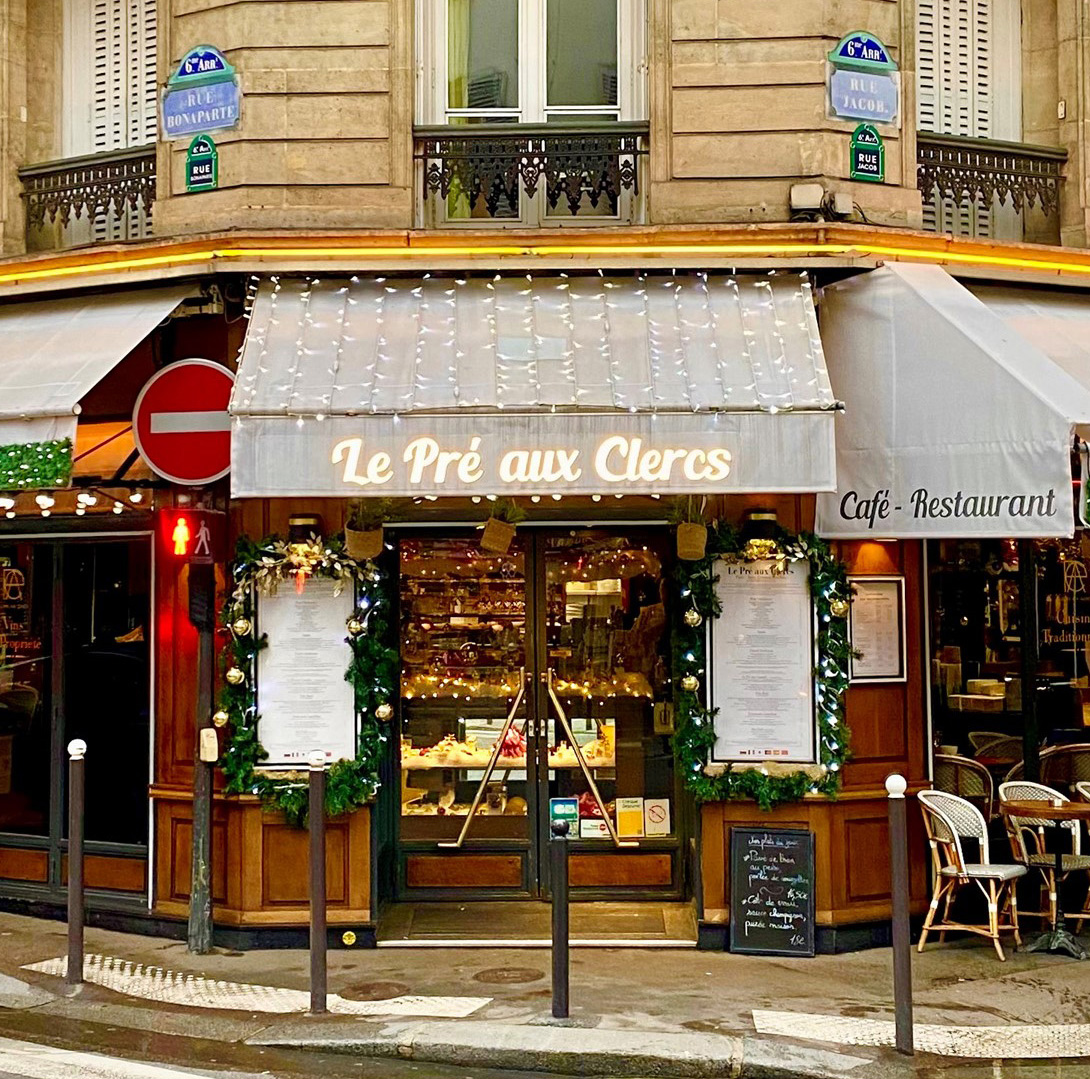
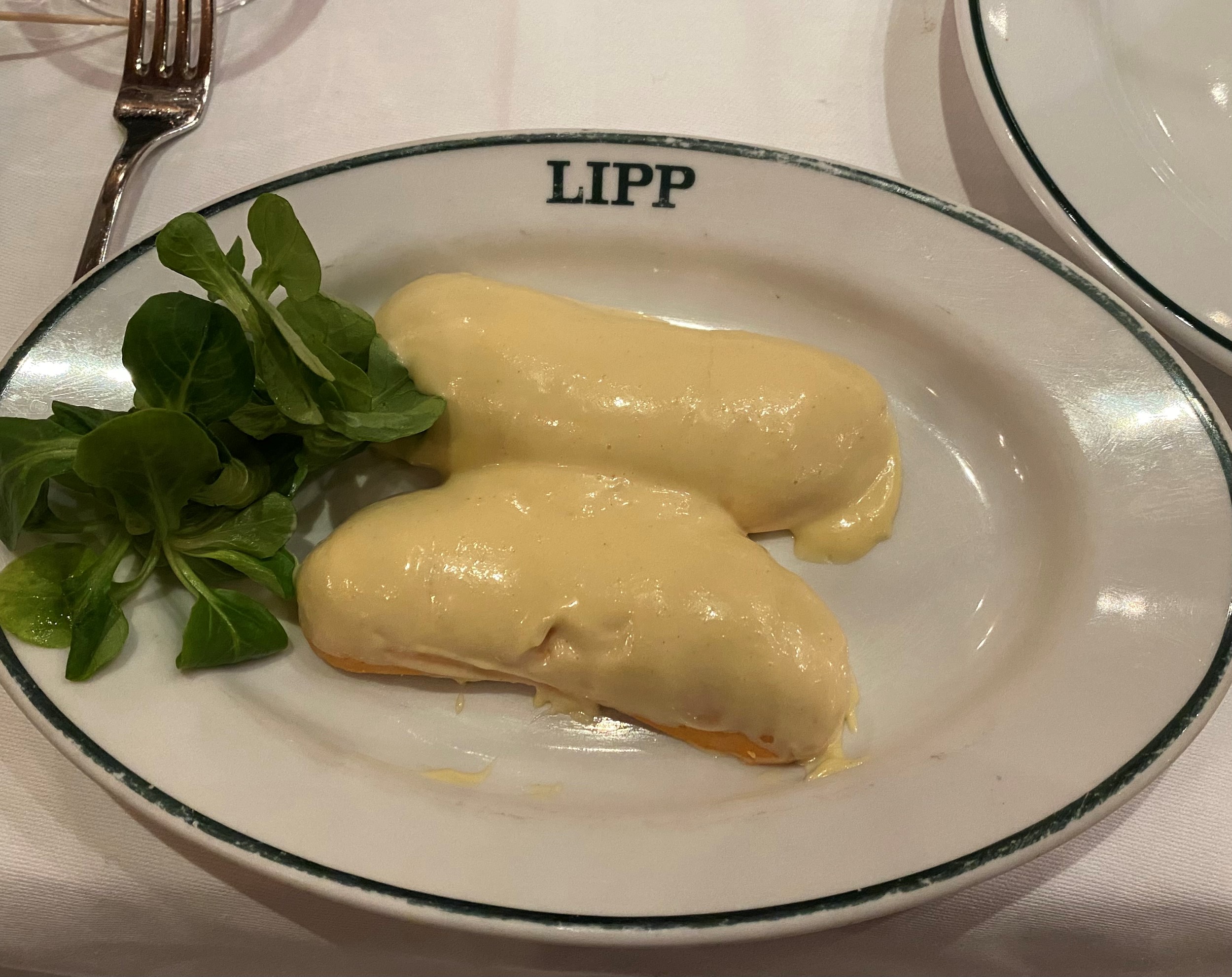
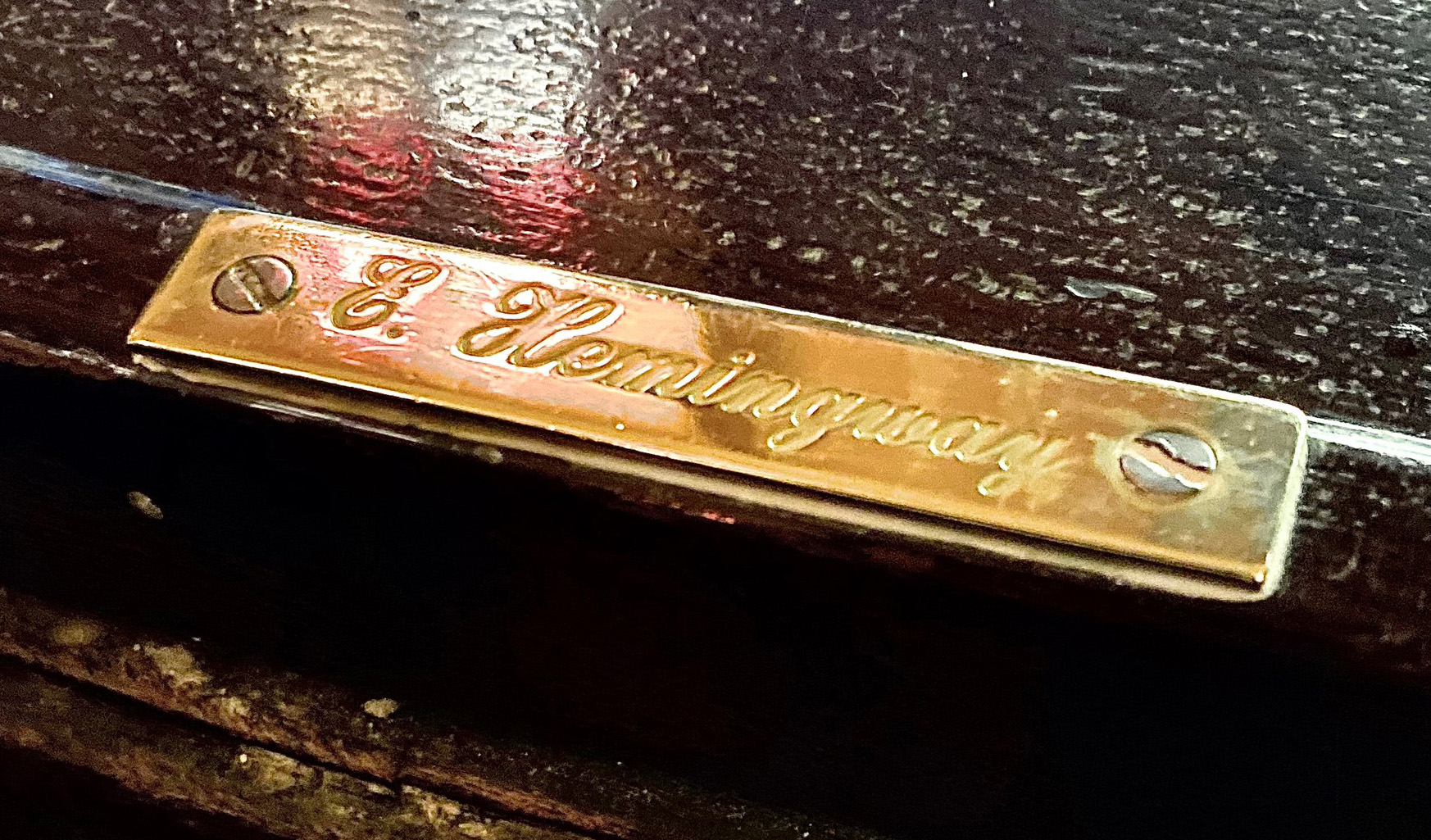
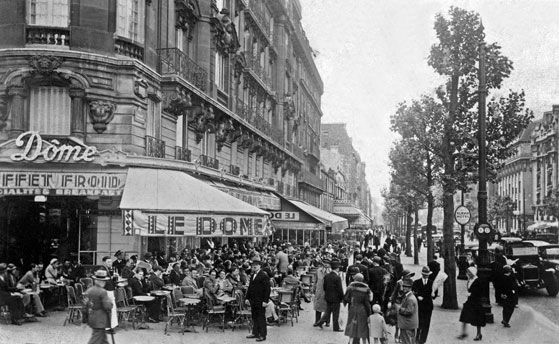

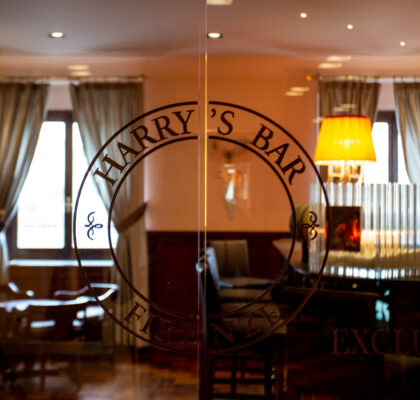
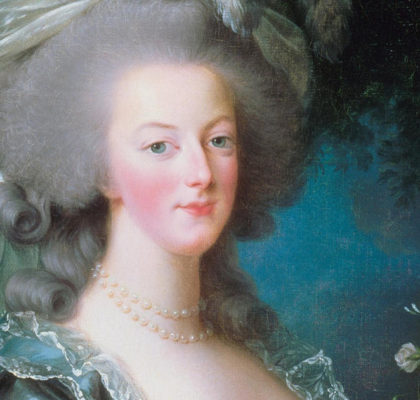
Absolutely fascinating! You are a terrific writer, makes we miss Paris!
Thanks Suzanne, looking forward to another Paris trip with you sometime.
I live at 14 Rue de L’Odeon and was familiar with the original Shakespeare &Co location. They have since moved next to the Seine. Hemingway also frequented Polidor restaurant which had been closed even before this pandemic started but is now open and their food is very good. The movie “Midnight in Paris” filmed the scene when our young writer first meets Hemingway in the restaurant. A very historical quartier in many respects.
Dear Billie, I envy your wonderful address – You are correct, I perhaps should have included Polidor, it was frequened by Hemingway and a host of other writers and artists in those days, pricipally because i was affordable for struggling young artists, “Midnight in Paris” is a wonderful film on many levels. I watch it at least once each year.